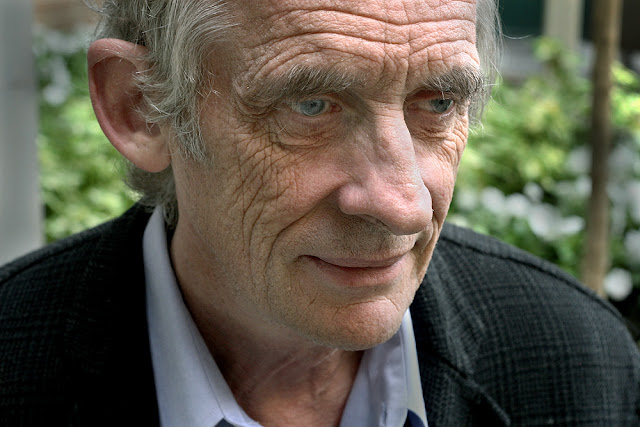 |
| Roger Spottiswoode, Toronto, Sept. 10, 2007 |
DIRECTOR ROGER SPOTTISWOODE DIRECTED TOMORROW NEVER DIES ten years before I photographed him at the film festival, where he was promoting Shake Hands With The Devil, a film based on the story of Canadian General Romeo Dallaire, and a project more of a piece with the politically-tinged work he seems to prefer. You could, of course, say that Bond films are also political, and they are - in about the same way that pornography is about relationships.
I definitely saw Tomorrow Never Dies in the theatre, since I didn't own a television when it came out. My experience of Bond films has never been wholly cinematic; as I said when I started this series, I saw all of the Connery Bonds on television, and most of the Roger Moore ones as well, though I tuned out of the series when it became almost pure camp. I only ended up seeing the Timothy Dalton Bonds years later, on DVD, since I spent most of the '80s poor and a film snob and recoiling from the later excesses of the Moore era.
I re-connected with the franchise with the Pierce Brosnan Bonds, and remember being quite happy with Tomorrow Never Dies when I saw it. There was no comparing it to From Russia With Love or Goldfinger, to be sure, but it was on a comparable level with later Connery Bonds like You Only Live Twice - epic and high style, and pitched just at the point where arch touched the border with camp.
 |
| Roger Spottiswoode, Toronto, Sept. 10, 2007 |
These are not kind portraits. Spottiswoode has what you might call a "lived-in" face, and even the relatively soft light on the courtyard patio at the Hotel Intercontinental on Bloor Street couldn't hide the deep wrinkles cross-hatched into his face. Like the Monica Bellucci portrait I did at the same film festival, circumstances suggested a stark portrait, and I filled the frame with Spottiswoode's face.
I didn't do this out of malice; Spottiswoode was perfectly decent to me and the interviewer from the free national daily where I worked. I had been doing these two-minute hotel portraits for several years by this point, though, and my reaction to situations where I had to work with almost no control over the setting or styling of a shoot was to submit to the restrictions and document - at least a little artfully, I hoped - the people who were being put in front of my camera.
It was a working method that was still influenced by two real variables - the cooperation of the subject and my own inspiration. I could make up for a deficit in the former with more of the latter, but sometimes the balance wasn't right. With the Spottiswoode portrait, I think I came up with a fairly decent result. In tomorrow's post, though, I wouldn't be so lucky.
No comments:
Post a Comment